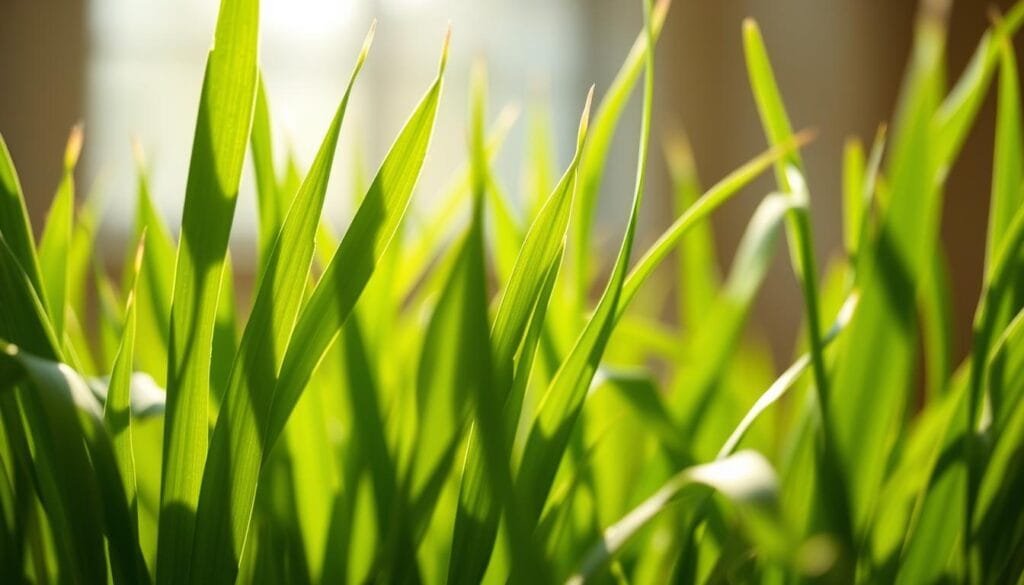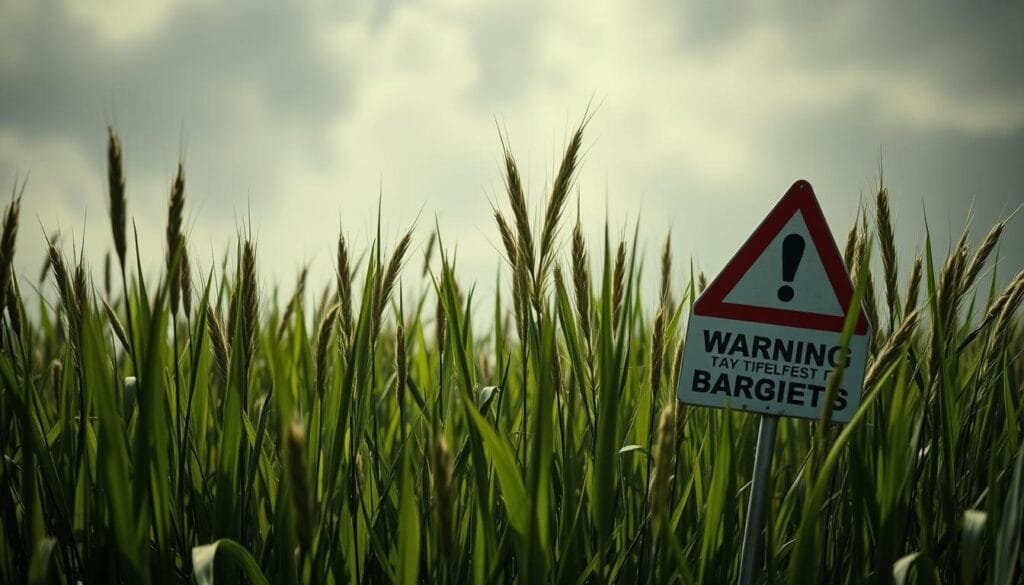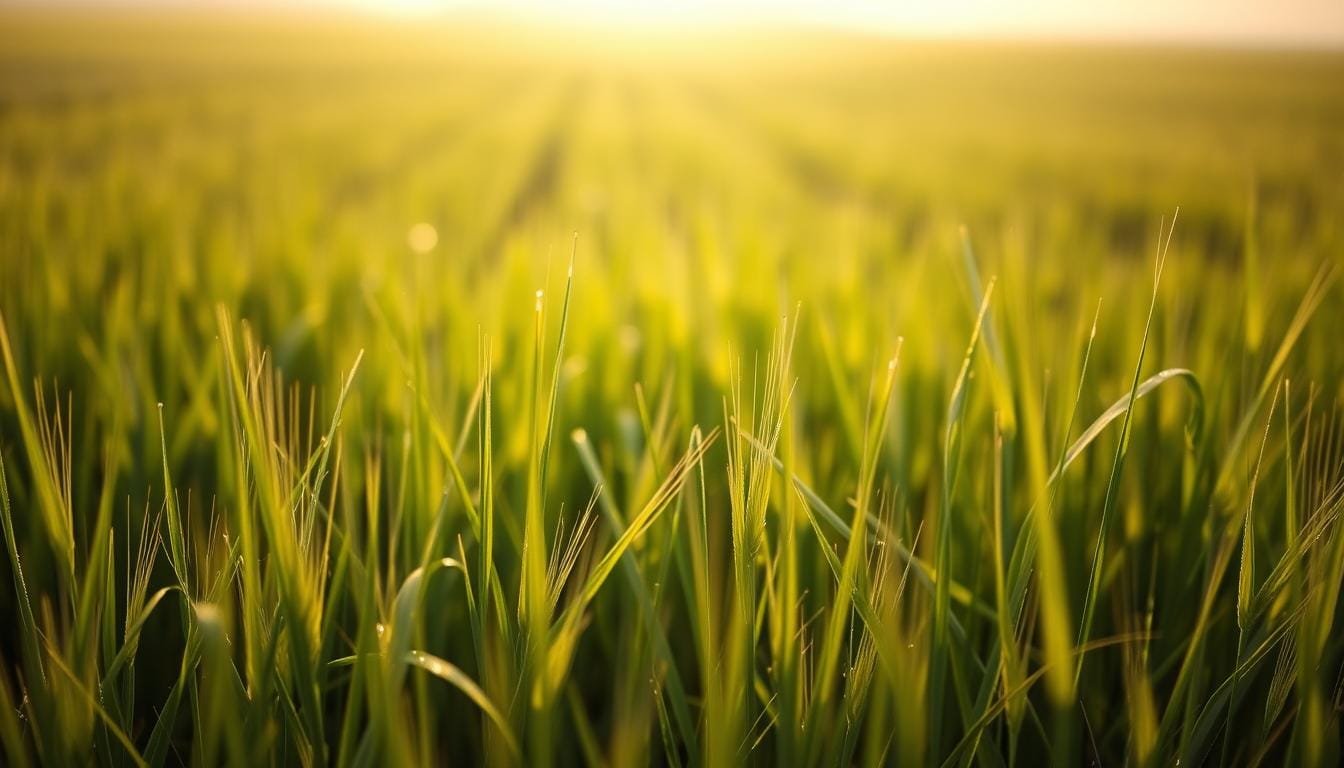Currently Empty: RM0.00
Did you know a single teaspoon of dried young grass powder can deliver several key vitamins and about 3 g of fiber per 10 g serving? This little plant has become a fast choice for busy people seeking a convenient superfood boost.
Wellness Concept in Malaysia is open daily to help visitors compare powders, juices, and ready-to-drink options. They welcome questions via WhatsApp +60123822655 and keep hours that fit most schedules: Monday–Friday 9:30 am–6:30 pm and Saturday–Sunday 10 am–5 pm.
This section introduces what the young plant is, why people see it at juice bars, and how simple servings—like a quick juice or a spoon of powder in water—fit into everyday health goals. Readers will learn about vitamins A, C, and K, antioxidant polyphenols, and practical ways to start without overhauling a routine.
Key Takeaways
- Easy start: Try a juice or a spoon of powder for quick nutrients.
- Nutrient-rich: Offers fiber, vitamins, and antioxidants.
- Available formats: Found as powder, juice, tablets, and gummies.
- Visit Wellness Concept: Open daily with WhatsApp support for product help.
- Fits routine: Works for newcomers and people who already enjoy greens.
Ultimate Guide to Barley Leaf Extract: What It Is and Why It’s Popular
Consumers in Malaysia often choose concentrated greens in powders or on-the-go juices for a simple nutrient boost. This section explains how young leaves differ from the cereal grain and why this grass appears at juice counters and health aisles.
Young leaves vs. grain: The cereal grain is grown for food, while barley grass refers to the young shoots used in green juices and powders. The grass packs concentrated nutrients, so a small scoop of powder or a short fresh sip delivers vitamins and fiber without heavy calories.
Formats and where to buy: Find ready-to-mix powder jars, single-serve juices, tablets, and gummies at juice bars, health stores, and supplement aisles. Many blends pair this plant with kale, spirulina, or wheatgrass to balance flavor and ingredients.
- Barley grass juice for a quick sip.
- Barley grass powder for mixing into smoothies or water.
- Ask about sample or small packs to test taste and convenience.
Need help choosing? Contact Wellness Concept on WhatsApp +60123822655 during daily hours for advice on strength, powder fineness, and beginner servings. Learn more about their juice offerings here.
Barley Leaf Extract Nutrition: Vitamins, Minerals, Fiber, and Antioxidants
Just a tablespoon of powdered young grass can be a quick source of vitamins, minerals, and amino acids. This nutrient-dense powder gives a practical reference for daily use and recipes.
Key micronutrients
Vitamins A, C, and K support immunity, skin and wound health, and bone and heart function. Minerals such as magnesium and calcium help with energy reactions and structural support for bones and teeth.
Fiber, protein, and amino acids
About one tablespoon (10 g) of dried powder supplies roughly 3 g of fiber, ~20 calories, and ~2 g of protein. It also contains all nine essential amino acids, making it a true superfood ally for plant-forward diets.
Antioxidants and green power
Young grass is rich in polyphenols, flavonoids, and chlorophyll. These antioxidants help counter daily oxidative stress and add vibrant color to smoothies and snacks.
Visitors in Malaysia can ask Wellness Concept for product guidance during daily hours via WhatsApp +60123822655 to match nutrient priorities and serving sizes.
Health Benefits Backed by Research
Research shows that certain green powders can help balance blood sugar and support cardiovascular markers.
Metabolic support — Increasing dietary fiber reduces blood sugar levels and can improve insulin sensitivity. Barley grass is rich in insoluble fiber, which may help steady glucose and support steady energy throughout the day.
Heart health — In one human trial, 36 people with diabetes who took 15 g of barley extract daily for four weeks showed reduced LDL oxidation, a known heart disease risk factor. Animal studies also reported lower total cholesterol and triglycerides.

Weight and digestion — Low-calorie, high-fiber powder helps promote fullness and may curb cravings. Soluble fiber assists cholesterol and glucose handling, while insoluble fiber supports gut bacteria and regularity.
Bone and inflammation support — The grass provides potassium, calcium, GABA, saponarin, and lutonarin. These compounds relate to lower blood pressure and reduced inflammation, and calcium plus phosphorus work together to support bone strength.
- Fiber can help balance blood sugar and energy levels; more human studies are needed.
- Human and animal data show favorable effects on cholesterol and lipid markers.
- Plant compounds and minerals may lower blood pressure and inflammation.
- Powder or juice can fit daily routines; powder gives precise serving control.
| Benefit | Evidence | How it helps |
|---|---|---|
| Blood sugar | Fiber studies; insulin sensitivity data | Slows glucose absorption; steadier energy levels |
| Heart markers | 15 g study in 36 people; animal lipid studies | Reduces LDL oxidation; lowers cholesterol and triglycerides |
| Digestion | Fiber composition research | Soluble fiber aids cholesterol handling; insoluble supports regularity |
| Bone health | Mineral synergy data | Calcium + phosphorus support bone structure |
Practical note: People seeking tailored advice can WhatsApp +60123822655 during open hours for guidance on benefits and product selection.
Forms and Flavors: Barley Grass Powder, Barley Grass Juice, and Extract Options
Formats matter when adding greens to a daily routine. Options include powders, ready-made juice, tablets, and gummies. Each format offers trade-offs in taste, prep time, and convenience.
Powders, juices, and tablets: choosing what fits
Barley grass powder works well in smoothies and breakfast bowls. It mixes easily and gives precise control over servings.
Barley grass juice is a quick-sip choice for busy days. Tablets suit those who prefer a no-mix format for consistency.
Single-ingredient vs. green blends
- Single-ingredient grass powder keeps ingredients simple and pure.
- Blends with kale or spirulina broaden the nutrient profile and can smooth flavor.
- Taste notes are subtly grassy with slight bitterness; citrus or pineapple balances it well.
- Check labels for clean ingredients and minimal additives for better health and diet fit.
Tip: Try samples at local juice bars before buying a full powder tub. For flavor notes, sample sizes, and daily availability, message Wellness Concept on WhatsApp +60123822655.
How to Use Barley Grass Powder in Smoothies, Juices, and Shakes
A simple scoop of powdered greens can turn a basic drink into a nutrient-rich pick-me-up. Start small and build taste and tolerance over days.
Daily dose guidance
Practical range: 5–15 g (about 1–3 teaspoons). Begin with 1 teaspoon and move toward 1 tablespoon as tolerated to find a routine dose. Consistent use at the same time daily helps support steady energy and habits.
Smoothie ideas and quick recipes
Try this easy smoothie: 1–2 teaspoons barley grass powder, 1 banana, 1 cup blueberries, and 1 cup milk of choice. Blend until smooth.
For a fast juice option, shake the powder with cold water and a squeeze of lemon. Use a blender bottle to avoid clumps.
Clever additions and uses
- Add powder to protein shakes after workouts for a simple nutrient boost.
- Whisk into yogurt or smoothie bowls and top with fruit and seeds for a fuller snack.
- Stir into quick breads or muffins (zucchini bread works well) for subtle green benefits.
Tip: Pairing powder with a protein source improves satiety. For personalized serving tips and product availability, WhatsApp Wellness Concept at +60123822655 during daily hours.
Safety, Risks, and Who Should Be Cautious
Safety matters: some supplements can affect medication, mineral balance, or trigger sensitivities in vulnerable people.

Medication interactions: Some products are high in vitamin K and can reduce the effect of blood thinners like warfarin. People on anticoagulants should keep vitamin K intake consistent and consult their clinician before adding any powder or extract.
Potassium and kidney concerns
Certain green powders contain notable potassium levels. Those with kidney disease or conditions that affect potassium clearance must check blood levels and speak with a healthcare professional.
Gluten and cross‑contamination
While gluten is mainly in the grain, cross-contamination can happen during processing. People with celiac disease or sensitive to gluten should choose certified gluten-free products and read labels closely.
Quality and third‑party testing
The FDA does not regulate supplements like drugs. For better safety and potency assurance, buy brands that publish third-party test results. Look for clear serving sizes, ingredient lists, and absence of unwanted additives.
“Keep vitamin K intake steady if you take blood thinners, and always verify product testing and sourcing.”
- Start with a low serving of powder and increase gradually to avoid digestive upset from added fiber.
- Check labels for allergens, added ingredients, and serving strength before regular use.
- Store powder in a cool, dry place to maintain quality and reduce risk over time.
Need help? Contact Wellness Concept on WhatsApp +60123822655 during business hours for questions about interactions, certifications, product sourcing, and safe use.
How to Choose a Quality Barley Grass Juice Extract or Powder
Not all powders are made the same; sourcing and testing separate the best from the rest. Start by checking where an item was grown and whether a brand publishes third‑party test results.
Organic sourcing, concentration, and clean ingredient labels
Pick organic when possible to reduce pesticide exposure. Look for clear ingredients and avoid blends with unnecessary sweeteners or fillers.
Compare concentration claims so you know how much real nutrition lands in each serving. Prioritize labels showing magnesium, calcium, and fiber values if those match your diet goals.
Taste, mixability, and storage tips for freshness
Taste natural grassy notes before committing. Check mixability in water or juice to make daily use easy.
Store airtight in a cool, dry place away from light. Buy sizes you can finish in a couple months to keep antioxidants and potency high.
“Choose tested, transparent brands and match concentration to your routine for better results.”
- Compare single‑ingredient powder vs blends depending on targeted nutrition needs.
- Note that juice powders and concentrated forms can vary in strength — align serving size with taste.
- Ask Wellness Concept for certified brand suggestions, storage tips, and demos via WhatsApp +60123822655. They are open daily for help.
Visit Wellness Concept in Malaysia: Open Daily for Barley Superfoods
Wellness Concept makes it easy for people to compare green formats and pick the right fit for daily health.
They welcome visitors who want hands‑on comparisons of juice versus powder. Staff guide shoppers through taste, mixability, and how each option fits a balanced diet.
Contact and hours
WhatsApp: +60123822655
Hours: Monday–Friday 9:30 am–6:30 pm; Saturday–Sunday 10 am–5 pm. Open daily for drop‑ins and quick questions.
Personalized guidance on ingredients and nutrition
Staff offer tailored advice on labels, serving sizes, and blends. They explain the benefits of single‑ingredient barley grass powder versus mixed superfood formulas.
- Try samples to check flavor and mixability before buying full sizes.
- Get quick stock updates and recommendations via WhatsApp.
- Ask about scoops, shaker bottles, and storage tips to keep powder fresh.
“Staff can help match products to diet goals and daily routines.”
Conclusion
A short, consistent habit with a small scoop can make greens a reliable part of daily diet.
Wellness Concept recommends practical servings of 5–15 g to start, using powder or juice formats for quick mornings or post-workout shakes. Small servings in smoothies and protein shakes help with energy and satiety while delivering vitamins, fiber, and antioxidants.
Choose third‑party tested, clean‑label options and store powder in a cool, dry place to keep nutrients fresh. Watch vitamin K, potassium, and gluten notes if medication or health conditions matter.
For personalized advice, product samples, or next steps, message Wellness Concept on WhatsApp +60123822655 — they are open daily and happy to help with the best way to get started and tailor servings to the body’s needs. Learn more about their options barley grass juice extract.
FAQ
What is barley grass powder and how does it differ from juice?
Barley grass powder comes from dried young green shoots that are milled into a fine powder. Juice is the fresh liquid pressed from those same young shoots. Powder lasts longer and fits easily into smoothies or shakes; juice delivers a fresher taste and quicker absorption but needs refrigeration and has a shorter shelf life.
How much powder should a person take daily?
A common daily dose is 1–3 teaspoons (about 5–15 g). They should start with the lower end to assess tolerance and increase slowly. Mixing it into smoothies, protein shakes, or a glass of juice helps mask the grassy flavor.
Can it help energy levels and workout recovery?
Yes. The greens provide micronutrients and antioxidants that support cellular energy and recovery. When paired with a protein shake or balanced meal, they can help replenish nutrients after exercise and reduce oxidative stress.
Are there proven benefits for blood sugar and weight management?
The soluble fiber and nutrient density can support blood sugar balance and feelings of fullness, which may aid weight management. They are not a standalone solution but work best alongside a balanced diet and regular activity.
Who should be cautious about taking these greens?
People on blood thinners or with medications sensitive to vitamin K or potassium should consult a clinician. Anyone with celiac disease or severe gluten sensitivity should choose products labeled gluten‑free to avoid cross‑contamination.
Are there interactions with prescription drugs?
Yes. High vitamin K content may affect anticoagulant drugs, and high potassium could matter for some heart or kidney medications. They should always check with a healthcare provider before starting regular use.
How can someone tell a quality powder or juice concentrate?
Look for organic sourcing, short ingredient lists, and third‑party testing for contaminants. Transparent brands list concentration, batch testing, and storage instructions. Taste and mixability notes help as well when choosing a powder.
Is it suitable for vegans and vegetarians?
Yes. Plant-based powders and juices are naturally vegan and provide vitamins, minerals, and plant protein that complement vegetarian diets.
Can children take it, and what dose is safe?
Children can usually take small amounts, but dosing should be adjusted for age and weight. Parents should discuss with a pediatrician first, especially if the child takes medication or has allergies.
How does fiber in these greens affect digestion?
The mix of soluble and insoluble fiber supports regularity and feeds beneficial gut bacteria. Those new to high‑fiber greens may experience mild gas or bloating; starting with a small dose and increasing gradually minimizes discomfort.
Can it cause allergic reactions or contaminants?
Allergic reactions are uncommon but possible. Cross‑contamination with gluten can occur in non‑certified products. Choosing reputable, tested brands reduces risk of contaminants like heavy metals or microbial issues.
What flavors pair well in smoothies and shakes?
Bright fruits like pineapple, mango, banana, and citrus balance the grassy taste. Adding protein powder, nut butter, or yogurt improves creaminess and satiety.
Are blends with other greens like kale or spirulina better than single‑ingredient powders?
Blends offer a broader nutrient profile and complementary antioxidants, while single‑ingredient powders allow precise dosing and clearer ingredient tracking. It depends on personal goals and taste preferences.
How should a powder be stored for best freshness?
Store in a cool, dry place away from light. Reseal airtight containers promptly and follow the brand’s recommended shelf life after opening to preserve nutrients and flavor.
Where can someone buy high‑quality products in Malaysia?
Good options include specialty health stores, juice bars, and reputable online retailers. Wellness Concept in Malaysia provides product guidance and is open daily; they can be contacted via WhatsApp at +60123822655 for hours and personalized recommendations.



